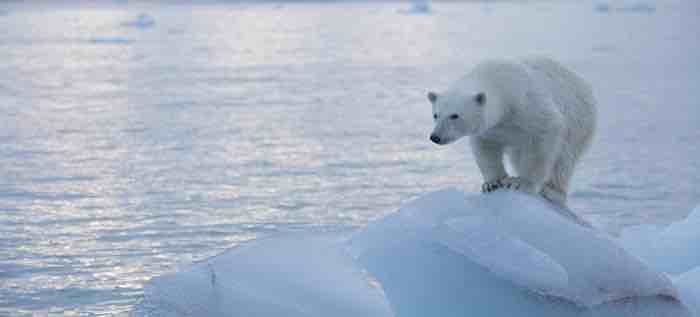The problem with the NOAA data is that it is fake data. NOAA creates the warming trend by altering the data.
Fiddling With Temperature Data

They also claim US temperatures rose 1.5 F since the 19th century., which is what the National Oceanic and Atmospheric Administration (NOAA) shows. The problem with the NOAA data is that it is fake data. NOAA creates the warming trend by altering the data. The NOAA raw data show no warming over the past century. The adjustments being made are almost exactly 1.5 F, which is the warming claimed in the article.
The hockey stick of adjustments since 1970 is due almost entirely to NOAA fabricating missing station data. In 2016, more than 42% of their monthly station data was missing, so they simply made it up.
All of the claims in the Climate Central article were bogus. The US is not warming and 2016 was not a hot year in the US. It was a very mild year. 1
Here's another example of NOAA exaggerating 'global warming' by fiddling with the raw temperature data. This time the data concerns the early 2018 record-breaking cold across the northeastern US which NOAA is trying to erase from history. 2
If you believe NOAA's charts, thee was nothing particularly unusual about this winter's cold weather.
An example: On average, the mean temperatures in January 2014 were 2.7 less than in 1943. Yet according to NOAA, the difference was only 0.9 F.
Somehow NOAA has adjusted past temperatures down, relatively by 1.8 F.
Clearly, NOAA's highly homogenized and adjusted versions of the Central Lakes temperature record bears no resemblance at all to the actual station data.
James Delingpole asks, “And if this one division is so badly in error, what confidence can there be that the rest of the US data is any better?” 2
Then there's the New York Times.
Software engineering Tony Heller, expert and publisher of the Real Climate Science blog, recently analyzed a web page by the New York Times that supposedly allows a reader to find out how much hotter his/her home town is today than when he/she was born. In a video Heller exposes a number of grave and fatal infractions and says the New York Times is fraught with deception. So massive are the transgressions that Heller concludes the page is 'climate fraud.'
3
One example Heller cites is the starting point the New York Times uses for its data, 1960. The software expert asks why it starts only at 1960 when the US data goes way back to before 1900. Here Heller uncovers the reason: It's because the weather in the US back in the early part of the 20th century was in fact much hotter than it is today, and the New York Times doesn't want its readers to see it.
Going back further, for example to the 1930s, would show readers that it was in fact hotter in the US back then than it is today. That's the last thing the New York Times wants its readers to know.
3
All this data manipulation aside, for those who worry about temperature change, Joanne Nova has this interesting observation: “A new evolutionary theory claims humans ended up out-surviving all the other hominids because we adapted ourselves to extreme climate changes and they didn't. We pushed ourselves into cold mountain peaks, arctic tundra, and the Sahara desert. Where most species are either a generalist or specialist, we are both—the ultimate generalist specialist. Today there are permanent settlements in places as cold as minus 50 C and as warm as plus 40 C. We survive across a ninety degree C range, and panic about two degrees of warming.”
4
References
- “100% of US warming is due to NOAA data tampering,” Aug. 20, 2018
- James Delingpole, “NOAA caught adjusting big freeze out of existence,” Feb. 20, 2018
- Pierre Gosselin, “Software expert: New York Times committing massive fraud and hiding all temperature data before 1960,” Sept. 4, 2018
- Joanne Nova, “Homo Sapiens—made for surviving extreme environments,” Aug. 2, 2018
Jack Dini -- Bio and
Archives |
Comments
Jack Dini is author of Challenging Environmental Mythology. He has also written for American Council on Science and Health, Environment & Climate News, and Hawaii Reporter.
 They also claim US temperatures rose 1.5 F since the 19th century., which is what the National Oceanic and Atmospheric Administration (NOAA) shows. The problem with the NOAA data is that it is fake data. NOAA creates the warming trend by altering the data. The NOAA raw data show no warming over the past century. The adjustments being made are almost exactly 1.5 F, which is the warming claimed in the article.
They also claim US temperatures rose 1.5 F since the 19th century., which is what the National Oceanic and Atmospheric Administration (NOAA) shows. The problem with the NOAA data is that it is fake data. NOAA creates the warming trend by altering the data. The NOAA raw data show no warming over the past century. The adjustments being made are almost exactly 1.5 F, which is the warming claimed in the article.